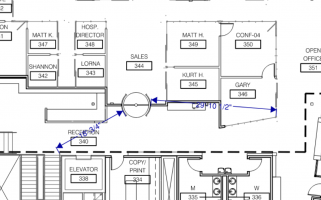Sifu
SAWHORSE
- Joined
- Sep 3, 2011
- Messages
- 3,391
I have an interior revolving door inside a third floor office (that occupies the entire floor) that provides circulation from a tenant's foyer to the inside of the tenant space. There is also a path around the perimeter of the space without a door that leads to the same foyer. The use of the revolving door is not required for access to the stair because the occupant can either go around it or to a different stair. Per IBC 1010.1 all MOE doors must comply with the requirements. I am pretty sure there is not an exemption from the requirements of 1010.1.4.1 but I need to check my assumptions. EATD, CPET are fine going around it, and there are two other enclosed stairs at either end of the building.


